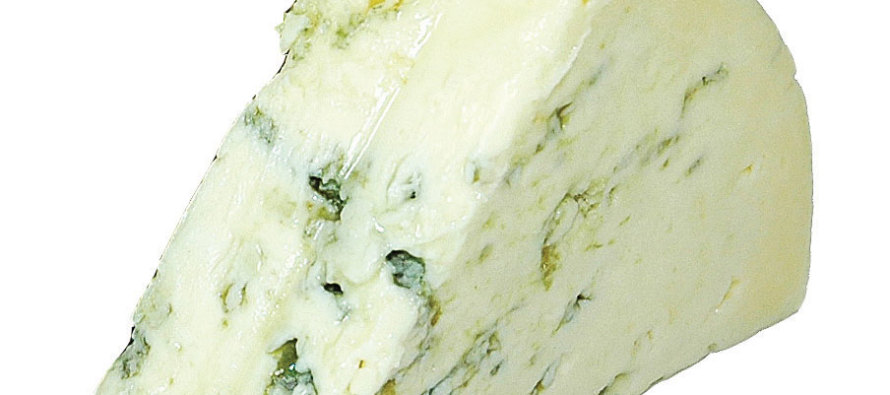The Blues

Nothing depressing about intense flavors found in blue cheeses.
As the legend goes, a young man was enjoying a simple lunch of bread and sheep’s milk cheese. Capturing his attention was a beautiful woman off in the distance. Stashing his meal in a nearby cave, he dashed off to pursue this lovely creature. As happens so often, his pursuit removed all other concerns from his head. Returning several months later, he found his abandoned meal. As he approached, it appeared undisturbed. Upon closer inspection he realized that his cheese had transformed. Attacked by mold! Now, this being but a legend, we cannot know why this young man decided not to dispose of this strangely colored, malodorous mess of a meal. For whatever reason, be it boldness, foolishness or curiosity (probably a mix of all three), he tasted it. At that moment, the world was introduced to what would become among the most famous of the blues, Roquefort.
What this man couldn’t know at the time was that his cheese had been consumed by the bacteria Penicillium (penicillium roqueforti, to be precise). This small bug is responsible for the wonderful blue-green veins of mold that transform ordinary cheese into the pungent yet sublime cheeses known generally as “blue.” There are a myriad of varieties of Penicillium out there, but they all produce some of the world’s most seemingly intimidating cheeses. Produced from cow, sheep and goat milk, blue cheeses are generally pungent, sharp and slightly salty. Used to produce the ubiquitous salad dressing, it’s also popular on pastas and atop virtually any slab of meat. As much as I love the aforementioned applications, my favorite way to enjoy a good blue is with a slice of Granny Smith apple. The sweetness of the apple balances the strong flavors of the cheese.
For years, the only source of fine blue cheese was Europe. It was thus, if you could find it, quite expensive. Enter Frederick and Robert Maytag, whose grandfather had started the Maytag appliance company. With the time and money that such lineage affords a person, they were able to take the work of two pioneering microbiologists from Iowa State University, Clarence Lane and Bernard W. Hammer, and begin the production of a domestic blue. The cheese produced by the Maytags has been one of the best-selling and most ubiquitous blue cheeses in the United States. It’s a beautiful straight-forward blue, without rind and wrapped in foil. It’s very nearly too strong for a cheese plate. But when used in dressings or recipes Maytag, like the sharp tasting Roquefort, is sublime.
Don’t let the strength of blue cheese turn you off; there’s a tremendous array of blues out there. There are great, subtle varieties out there such as the Rogue River Blue. It’s produced in Oregon and wrapped in grape leaves. It has all the wonderful pungency of blue but in a subtler, slightly fruiter wedge. Or try a Shropshire Blue, from the U.K. It has the familiar blue veining with a color similar to cheddar and with a firmer texture and nicely rounded taste and a tiny hint of smoke. One of my favorites, Cambozola (if you can find the black label, it is worth the extra bucks), which I’ve written about previously, is a blend of triple cream brie and blue cheese. Sure to please all but the most timid eater.
In dressings, atop a piece of grilled meat or by itself, you’d be hard pressed to find more complex and intense flavors anywhere in the food world than those found in blue cheeses. As always, explore, research and enjoy.

Matt Biggins
Matt Biggins may have discovered his love for cheeses working the rice paddies in western China. He could have learned to write during his stay on MIR. If so, he's certainly happy to be living comfortably in the US and working with FSM Omaha.
No comments
Write a commentOnly registered users can comment.











